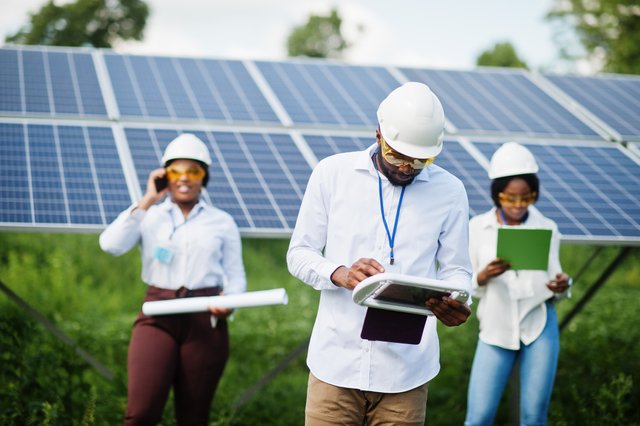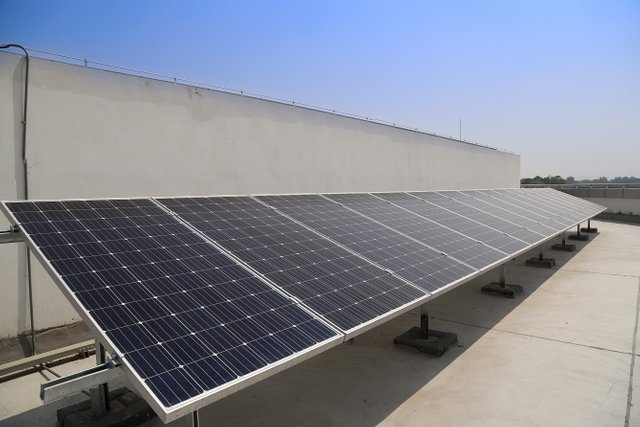SLC21/WK5: Introduction to Basic Solar Power
Introduction to Basic Solar Power
Good day friends, it is my pleasure to participate in this engagement challenge. As the name says, it is a real challenge. I am happy I challenged myself to do this.
A. Share your knowledge about solar power with us by reading our lesson.
Solar electricity is a system that uses photovoltaic effect to produce electricity with the help of direct or concentrated sunlight captured by solar panels. The electricity produced by solar panels is clean and environmentally friendly.
Working principle
To enjoy solar electricity,panels will have to be installed on the rooftop of your home. The panels are made of some special photo cells that convert sunlight into electricity.
- When the sunlight hits the cells on the solar panels, it causes them to generate DC electricity whic flows through conductors.
- The DC power may be fed into an inverter, which converts the DC power into alternating current that powers your home appliances.
- Excess energy is backed up in a battery bank to be used at night when the sun sets.
Solar electricity is environmentally friendly, with zero noise pollution, zero gas emissions. A panel can be operational for about 25 years. You will not buy fuel to run the system, and you can not run out of sunlight.
B. Write three important differences between AC solar and DC solar systems. (as learned from our lesson)
Some solar power systems supply the DC power they generate to the load; this is the DC solar, while the AC solar will convert it to AC before supplying it to the load.
| AC solar | DC solar |
|---|---|
| The output is AC power | The output is DC power |
| AC solar makes use of an inverter | DC solar makes use of a charge controller |
| AC solar are expensive because they need an inverter | DC solar needs no inverter making it less expensive |
| AC solar powers general appliances | DC solar can only power DC devices |
C. Calculate your home's electrical load and share it with us. Follow our lesson as an example.
| Item | Unit | Total watt |
|---|---|---|
| 1 42" Panasonic TV | 37w | 37w |
| 12 Electric Bulb | 35w | 420w |
| 1 Pressing iron | 600w | 600w |
| 2 Ceiling fan | 75w | 150w |
| 1 Refrigerator | 600w | 600w |
| > | Total | 1,807w |
D. Prepare a DC solar project specification for a customer's home to use four 5-watt lamps and three 20-watt fans.
4 x 5w = 20
3 x 20w = 60
20 + 60 = 80w
A specification for a solar power system to power an 80W load for 12 hours nonstop.
Solar Panel Specification
250W 24V @ 10A
Efficiency 20%
Battery Specification
24V 500Ah Deep Cycle Battery
Charge Controller Specification
Maximum Power Point Tracking
24V 20A
With this specification, the system will have 250watts for a load of 80 watt, providing plenty of room for future upgrades. After a full charge, it will run for 12 hours on the backup batteries.
E. Prepare specifications for a customer's AC solar system to drive a water pump motor of 1 HP or 746 W and write the function of each device.
Solar power specification for an AC system expecting a 746W load:
Solar Panel Specification
2000W 24V 40A
MPPT charge controller
Efficiency 20%
Battery Specification
24V 1000Ah (Deep Cycle battery)
Inverter Specification
Input: 24V 40A
Output: 240V 1500W
(pure sine wave inverter)
With this specification, this system can support the 1Hp load from the pump for 29 hours.
I am inviting @bossj23, @eliany and @bela90 to attempt this challenge. I have come to learn more about wattage, amps, amps hours and how they relate to how long a load will last on a battery backup.



It's good to be back. Good to see your entry on this. Your explanations are solid proof that you understand everything about this.....